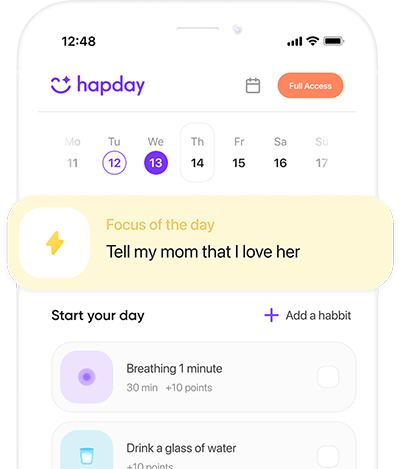The term work-life balance is thrown around a lot, but for many of us, it feels like a goal that’s always just out of reach. We live in a world that often blurs the boundaries between work and personal time. With emails, messages, and tasks constantly vying for our attention, finding that balance can seem almost impossible. Yet, the benefits of a healthy work-life balance are well-documented: lower stress, higher productivity, better mental health, and stronger relationships.
The key to achieving a sustainable work-life balance isn’t about perfectly separating work and personal time every day; it’s about creating harmony between them over the long term. This article explores proven strategies and science-backed tips for finding your balance, so you can live a more fulfilling, harmonious life.
Why Work-Life Balance Matters
Work-life balance isn’t just about reducing stress; it’s about enhancing well-being in every area of your life. Studies show that people with a strong work-life balance are 21% more productive and report being 60% happier than those who constantly feel overwhelmed by work. A report from the American Psychological Association (APA) found that individuals who prioritize work-life balance experience better health, fewer instances of burnout, and more fulfilling relationships.
The Consequences of Poor Balance
Without balance, chronic stress can build up over time, leading to what’s known as burnout. According to the World Health Organization (WHO), burnout is now considered an occupational phenomenon, characterized by exhaustion, cynicism, and reduced professional efficacy. People who struggle to find balance are also more likely to experience mental health issues, such as anxiety and depression, and physical health problems, including high blood pressure and sleep disorders.
1. Set Boundaries That Stick: Learning to Say “No”
One of the most crucial aspects of work-life balance is setting firm boundaries. When work responsibilities start to seep into personal time, stress levels increase, and both work and personal life suffer. Learning to say “no” is a powerful way to protect your time and energy.
Tips for Effective Boundaries:
- Define Your Work Hours: Even if you work from home, set specific times to start and stop working. Research from Harvard Business School shows that employees with set work hours are 47% more productive and less stressed.
- Communicate Clearly: Let colleagues and supervisors know your boundaries. For example, let them know you won’t be checking emails after 6 PM or on weekends.
- Stick to It: Hold yourself accountable. If you’ve set a boundary of not answering emails after hours, honor that commitment.
Real-World Example: Sarah, a project manager, started setting a “no work after 7 PM” rule. By setting this clear boundary, she noticed a drop in stress and an improvement in her family relationships.
2. Prioritize and Delegate: Focus on What Truly Matters
Many people feel the need to do everything themselves, but this can be exhausting. Prioritizing essential tasks and delegating the rest can dramatically improve your work-life balance.
How to Prioritize and Delegate:
- Identify Key Priorities: Use the Eisenhower Matrix (urgent vs. important tasks) to identify which tasks need your immediate attention and which can be delegated or postponed.
- Delegate When Possible: Studies show that managers who delegate report higher job satisfaction and productivity. If you have a team, make use of it—delegate tasks that others can handle.
- Limit Your To-Do List: Set a maximum of three to five essential tasks each day. Research indicates that people who focus on a few key tasks are more productive and experience less stress.
Example: John, a sales director, decided to delegate daily reporting tasks to his assistant. This small shift freed up hours each week, allowing him more time to focus on strategic planning and spend evenings with his family.
3. Embrace the Power of Unplugging: Take Real Breaks
In a constantly connected world, unplugging can feel counterintuitive. However, taking real breaks—where you’re genuinely disconnected from work—can do wonders for mental clarity and overall well-being.
Strategies for Effective Breaks:
- Take Mini-Breaks Throughout the Day: Try the Pomodoro Technique (25 minutes of focused work, followed by a 5-minute break). Studies show this method can increase productivity by up to 20%.
- Use Vacation Days: Taking time off isn’t just a luxury; it’s essential. A study published in Psychosomatic Medicine found that people who take regular vacations experience a 30% reduction in stress and a 20% increase in productivity.
- Unplug After Work: Turn off notifications or switch to “Do Not Disturb” mode on your phone after work hours. This simple act can help you mentally detach from work and be fully present in your personal life.
Pro Tip: Leave your work phone in another room during family time or dinner. This helps you avoid the temptation to check messages or emails.
4. Schedule Time for Personal Passions and Hobbies
Doing things you love outside of work adds a sense of fulfillment to your life and helps you recharge. Research from the University of California, Berkeley, shows that people who engage in regular hobbies experience higher levels of happiness and lower levels of stress.
How to Make Time for Hobbies:
- Schedule It Like a Meeting: Treat hobbies like any other commitment by scheduling them in your calendar. This prioritizes them in your routine.
- Experiment with New Activities: If you’re not sure where to start, try something new each month. Whether it’s painting, hiking, or learning a new language, exploring different interests can boost creativity and reduce stress.
- Combine Hobbies with Social Time: Join a class or group that interests you. Not only do hobbies reduce stress, but the social aspect can improve mood and mental well-being.
Example: Maria, a software engineer, started attending a weekly pottery class to unwind. This dedicated time allowed her to disconnect from work stress and sparked a new creative outlet, leaving her feeling more energized and balanced.
5. Practice Mindfulness and Meditation: Centering Your Mind
Mindfulness and meditation can be game-changers when it comes to finding balance. Practicing mindfulness helps reduce anxiety, improve focus, and enhance emotional resilience. Studies show that even 10 minutes of daily mindfulness practice can significantly reduce stress and improve overall well-being.
Simple Mindfulness Practices:
- Mindful Breathing: Take 5-10 minutes each morning or evening to focus on your breath. Inhale for a count of four, hold for four, and exhale for four. Research shows that mindful breathing lowers cortisol, the body’s main stress hormone, by 22%.
- Body Scan: Lie down and mentally scan each part of your body, from head to toe, releasing any tension you notice along the way. This can help you relax and improve sleep quality.
- Gratitude Practice: Spend a few minutes each day reflecting on what you’re grateful for. Studies show that gratitude practices increase happiness by up to 25% and can improve resilience.
Example: Tom, a financial analyst, starts each day with a 10-minute mindfulness session. He noticed that this practice made him more focused and less reactive to work-related stressors.
6. Set Work-Life Goals: Define What Balance Means to You
Work-life balance looks different for everyone, so it’s important to define what it means for you. Setting clear goals for what you want to achieve both at work and outside of work can help you create a fulfilling and balanced life.
How to Set Work-Life Goals:
- Reflect on Priorities: What matters most to you? Family, career, health, personal growth? Make a list of your top priorities.
- Create Short- and Long-Term Goals: Set SMART goals (Specific, Measurable, Achievable, Relevant, and Time-bound) for both personal and professional life.
- Regularly Reassess Your Goals: Life changes, so should your goals. Regularly check in with yourself to make sure your goals still align with what you value.
Example: Alex, a marketing executive, decided that family time was his top priority. He set a goal to be home by 6 PM each night. By setting this goal, he restructured his workday, became more efficient, and found himself feeling more present and engaged with his family.
7. Embrace Flexibility: Be Kind to Yourself
Work-life balance isn’t a fixed state; it’s fluid and constantly evolving. Being adaptable and allowing yourself grace during challenging times is essential for long-term balance. Remember, perfection isn’t the goal—balance is about making adjustments as needed and staying mindful of your well-being.
Ways to Cultivate Flexibility:
- Reframe Setbacks: View setbacks as opportunities to adjust and improve. Being adaptable means acknowledging when something isn’t working and being willing to change it.
- Practice Self-Compassion: Be patient and forgiving with yourself. Research shows that people who practice self-compassion are less likely to experience burnout.
- Celebrate Progress: Recognize and celebrate small victories, whether it’s successfully unplugging for a weekend or setting a new boundary at work.
Example: Nina, a teacher, realized that her goal of a daily one-hour workout wasn’t always realistic. Instead, she shifted her focus to “moving her body daily” in any way that felt achievable. This flexibility reduced her stress and made fitness an enjoyable part of her routine.
Moving Forward: Balance as a Lifelong Journey
Creating a work-life balance is less about achieving a perfect equilibrium and more about making mindful choices that prioritize well-being. By setting boundaries, staying connected to personal passions, embracing flexibility, and prioritizing relationships, we can build a life that’s not just manageable, but truly fulfilling.
Remember, balance is a process. It’s okay to have weeks where work demands more of you and other times when personal needs take precedence. As you experiment with these strategies, stay attuned to what feels right for you and be willing to make adjustments along the way.
Ultimately, achieving harmony in work and life is about creating a lifestyle that supports both your personal and professional well-being. Embrace the journey, celebrate your progress, and remember: balance is about building a life that works for you.
Ready to transform your life? Install now ↴
Join 1M+ people using Hapday's AI-powered tools for better mental health, habits, and happiness. 90% of users report positive changes in 2 weeks.

